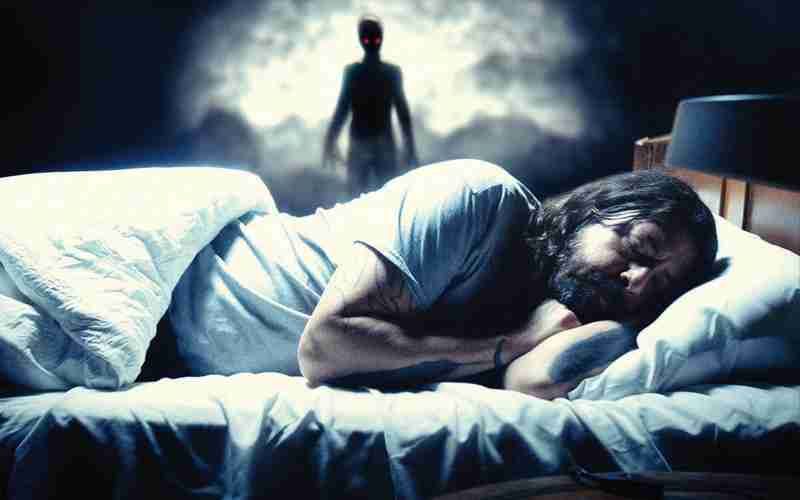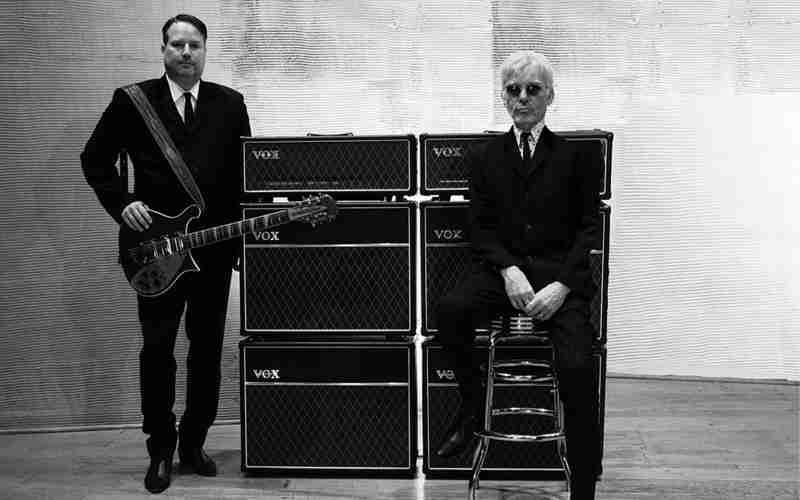In addition to selling millions of records and packing stadiums around the world during their more than 25-year career as a band, Foo Fighters have also demonstrated a propensity toward silly music videos. The visual companion pieces to songs like “Everlong,” “Learn to Fly,” and “Long Road to Ruin” are spearheaded by the goofy charisma of frontman Dave Grohl, who has no compunction about sporting a wig or fake mustache for yuks.
Conjured forth from those comedic impulses comes Studio 666, a horror-comedy that could have worked as a five-minute music video but absolutely flounders as a 106-minute feature. Shot partially during lockdown in the same mansion where the band recorded their 10th album, Medicine at Midnight, it’s a lazy and pointless vanity project that inexplicably crept onto 2,000 screens nationwide this past weekend.
The story features fictionalized versions of the Fighters, pressured by their manager Jeremy Shill (Jeff Garlin) at the outset to complete new music for their record company. Looking for inspiration, they take Shill’s advice and move into an Encino house where a fictional band, Dream Widow, had almost finished an album of their own before the project ended abruptly by grisly means.
After regurgitating riffs from tunes that he’d already written, Grohl accepts that he’s going through a bout of songwriter’s block before happening upon the reels from Dream Widow’s partial recordings in the basement. Listening to the tracks possesses Grohl, not only figuratively in terms of musical inspiration but also literally, as the music unlocks unholy spirits that turn the frontman demonic.
Lifting visually from horror classics like The Exorcist and The Omen, and narratively from scores of others, Studio 666 simply doesn’t have enough of its own ideas to justify its existence. Grohl is credited with coming up with the story, obviously conceived during his time recording the real album, but the screenplay by Jeff Buhler and Rebecca Hughes is paper-thin and painfully puerile. When the band members aren’t exchanging naughty four-letter words, they’re stuck with witless dialogue about subpar grilling techniques or aversions to meditation. Comedians like Whitney Cummings and Will Forte, the latter as a delivery guy who professes Foo Fighters are his “second-favorite band after Coldplay,” pop up to punch things up, but their effort is sadly in vain.
In the aforementioned music videos and numerous TV appearances throughout the years, Grohl has exhibited an endearing charm that has served him even outside the context of Foo Fighters fans. However, the rest of the band clearly doesn’t share his affinity for a life in front of the camera. Of course, the other five members are great musicians, but their unnatural and unconvincing acting feels like the product of Grohl pushing these guys past their natural abilities. Drummer Taylor Hawkins, who reportedly didn’t bother to learn any of the lines, ironically gives the funniest performance of the lot simply by replaying the same note of weirded-outness at the occult occurrences. The other four Fighters are relegated to reaction shots that don’t produce any laughs nor add to the impact of the would-be scares.
The one aspect that the production team seemed to put any effort behind is in the gory practical effects during the inevitable kill scenes, which are admirable in their craft if not completely novel in their execution.
Director B.J. McDonnell, who headed up the third entry in the Hatchet slasher series, leans into his skill set and delivers a few sequences that pay off with over-the-top slayings that make fine use of unique props and settings.
An icon of the horror genre also shows up in an all-too-brief cameo as a sound engineer, while a legend of soul music says “hello” in another scene without adding much of an impact.
Studio 666 obviously doesn’t diminish the Foo Fighters’ music legacy, but it should put a swift demise to any future cinematic aspirations for the group.
 Submit Your Event
Submit Your Event



